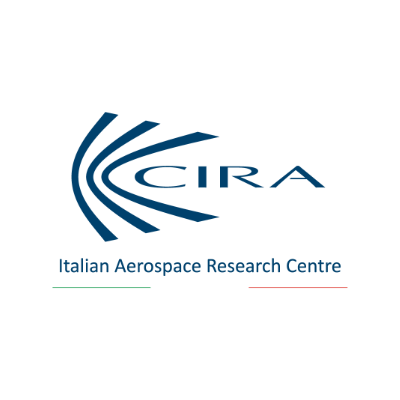CIRA
A. ENTITY DESCRIPTION
CIRA, the Italian Aerospace Research Centre, is a company mainly of public ownership created in 1984 to perform research in the fields of space and aeronautics. The Centre, with headquarters and operational structures in Capua, Campania, was founded by the Italian State to promote research and technological development in the fields of space and aeronautics matching that of other European countries and enable Italian enterprises to compete at high levels on the international markets. The National Research Council, the Region of Campania (through Area Sviluppo Industriale of Caserta), and industries and SMEs of the aerospace sector who play a part in the company, all ensure that CIRA’s goals remain consistent with the strategic national guidelines and the needs of companies, thereby contributing to the economic development of the country. Today, thirty years since it was set up, CIRA has the biggest research facilities in the field of aerospace in Italy, with testing facilities that are unique in the world and state-of-the-art laboratories used by industries and bodies in Taly and around the world. CIRA has three world-class experimental facilities with unique performance: the Laboratory for Impact Tests on Aerospace Structures (LISA) designed to simulate aircraft and helicopters crash conditions; the Plasma Wind tunnel (PWT) which provides ground simulation of the extreme high energy conditions encountered by space vehicles re-entering from low Earth orbit or interplanetary voyages; the Icing Wind Tunnel (IWT) for the simulation of ice accretion on aircraft and ice protection system qualification, the Space Qualification Lab specialized in supporting companies for the qualification of nano and micro satellites, electronic and mechanical components of space, avionic and military systems. The company specializes in the most advanced techniques of aerospace research: from the study of aircraft and spacecraft able to fly autonomously and at very high speeds; to the development of innovative systems that can reduce the environmental impact of aircraft, increase flight safety, and improve the management of air traffic; and to the development of technologies for the future space transport systems. CIRA takes part in the main European and International research programs, collaborates with top Universities and aeronautical and space companies in Italy and other countries, and is also a strong attractor of talent and industrial investments. 370 people currently work for CIRA, mostly in research and in scientific and technological development.
B. ROLE IN THE HERFUSE PROJECT
Empennages Concept (CIRA is the lead of task 3.3).
- Horizontal tail concept design (multi-disciplinary and multi-objective structural optimization)
- Horizontal morphing and structure layout (high-level design considering different configurations)
- Morphing dynamic requirements and aeroelastic stick models.
- Definition of target shape and aerodynamics loads for horizontal tail-plane morphing device design by using low-order and 2D tools.
- standalone empennage aeroelastic evaluation.
Structural Analysis (Cira is a participant with several technical activities)
- Structural Analyses in support of technological details developed in WP4 sub WPs pertaining to the HTU structures. Composite novel double-double approach for the empennage (the development of methodologies and tools for double-double approach will be supported by Additional Activities).
- Morphing: Robustness evaluation of the high-level architectures (two architectures in total); definition of dedicated metrics for a trade-off and identification of the most promising morphing concept and perspective TRL evaluation.
Empennages preliminary design (CIRA is lead of task 5.2).
- CIRA will Design and structural analyses of the Horizontal Tail Unit for the use case selected from the first tradeoff.
- HTU stick beam and standalone empennage aeroelastic evaluation.
- Morphing: Update of the model of the selected architecture identified during the trade-off; load bearing and functionality checks implementing static linear and not linear analyses, and normal mode analysis, respectively.
- Verification of aerodynamics performances of actual morphed horizontal tail-plane morphing device and provision of second loop target shape design by using low-order and 2D tools.
Stressed Empennages (CIRA is lead of task 7.2).
- Detailed stress analysis and updated design of the full-scale HTU demo. Bird strike analyses HTU stick beam and standalone empennage aeroelastic evaluation.
- Morphing: advanced stress model to enable the executive design
- Verification of aerodynamics performances of horizontal tailplanes equipped with morphing device and comparison of aerodynamics performance of classical horizontal tailplanes.
Life Cycle Assessment (CIRA is the lead of task 9.2).
- CIRA will be in charge of the Life-cycle assessment of the components, subsystems, and full fuselage system according to EN ISO 14040:2006 Environmental management – LCA - Principles and framework and EN ISO 14044:2018 Environmental management – LCA - Requirements and guidelines.
Consider as CIRA reference people:
- Antonio Chiariello (Task Leader and PM)
- Marika Belardo (Project Quality Manager)
